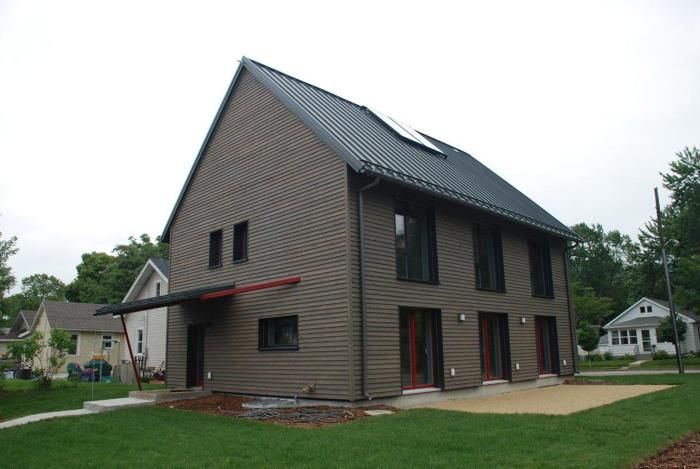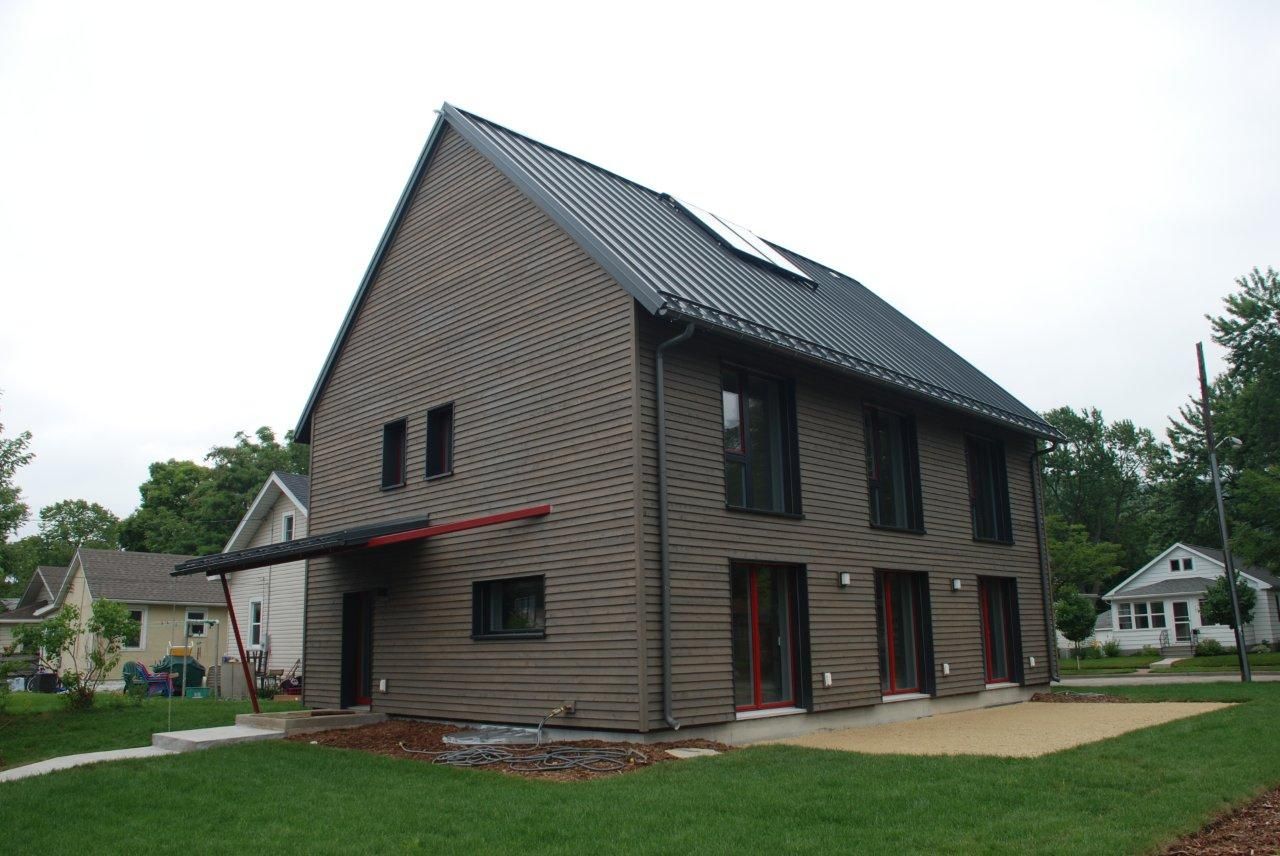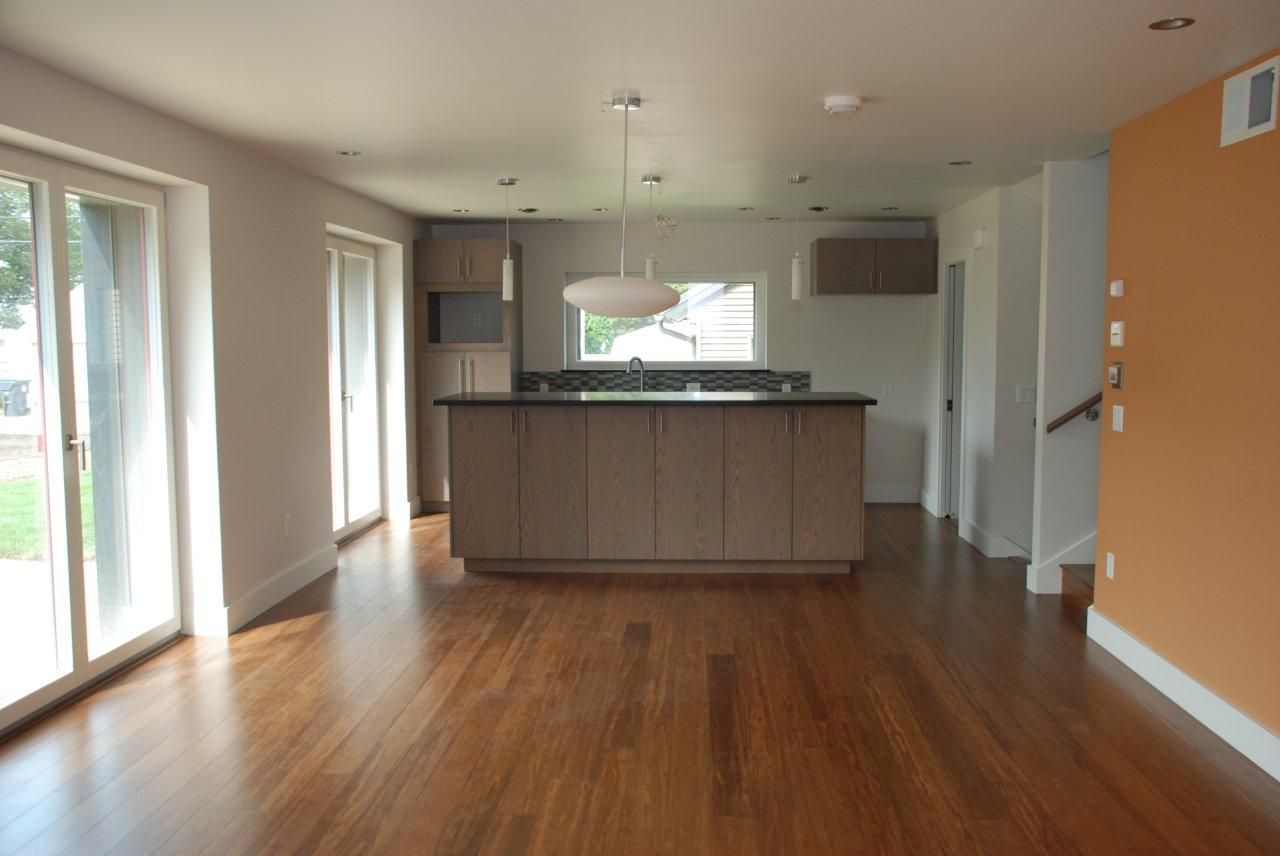
Students that are enrolled in an unusual collaborative program at Western Technical College can expect a lot more than classroom lectures and an occasional pop quiz as they study high-performance residential construction. Working alongside design and construction professionals, they’re learning about the special challenges of Passivhaus construction by helping to build Passive Houses.
The students are future architectural techs, landscapers, carpenters, building system specialists, and HVAC installers. And now they have at least one thing in common: a 2597-square-foot, three-bedroom house in LaCrosse, Wis., which they helped design and build. Two other houses are on the boards.
The five technical disciplines, grouped administratively in the Center for Building Innovations on the campus of 12,000 students, is wrapping up work on the first of three “SwiPHt” homes (Structures with integrated Passive House technology). All three are being built on the re-zoned site of a dismantled greenhouse in LaCrosse’s 24th Street neighborhood.
The academic end of the SwiPHt program is overseen by Joshua VandeBerg, a 41-year-old instructor, who spent years in the residential remodeling business. He later worked in a program in LaCrosse that combined building with helping high-school dropouts earn their GEDs. Two years ago, he joined Western Technical to head its building-systems technology program.
The college had been talking for a decade about building a net-zero-energy building, VandeBerg said by telephone recently, and because the college values both sustainable-building principles and community engagement, SwiPHt seemed like a good first step. “It was an interesting way to tackle both of these values in a pretty meaningful way,” he said.
A mix of student and professional effort
Rather than throw students into a Passivhaus project and hope for the best, the college brought in both a professional designer and a general contractor for the brunt of the work on the first house. They included Tim Eian of Intep and Fowler and Hammer, a local general contractor with a lot of commercial experience. (Readers may know Eian through a blog he writes and his Passive House in the Woods. VandeBerg was certified as a Passive House consultant last year.
Hillview donated its ailing greenhouse, which students took apart, and gave what amounted to five city lots to the college. With the property re-zoned for residential use, the college and a number of other private and public partners came up with the funds to build the first house.
As many as 150 students participated through workshops in planning the house, but only 10% to 15% of the job-site work was done by students, VandeBerg said. On the second house, the plan is to have students provide about 50% of the on-site work; and on the third house as much as 75%. The second and third houses will include prospective homeowners as well as students and the college.
“That’s going to be a soupy mess in some ways,” VandeBerg said, “but it’s going to give us a great opportunity with our students to get in and feel what it’s like. I think it’s really a good thing. There’s a ton of things we’re going to be able to work through as an institution with our students. That’s really valuable real-world experience.”
More than that: VandeBerg expects the project to win certification through the Passivhaus Institut as well as a regional sustainable-building program called Green Star.
House particulars
The first SwiPHt house is two stories with a full basement and a configuration that could be three or four bedrooms. There are three full baths.
Exterior walls, with a total R-value of 58, consist of a structural 2×6 wall insulated with fiberglass batts, then a 14-inch, non-structural outer wall built with I-joists and insulated with dense-packed cellulose. The air barrier is provided by a 3/4-inch-thick layer of OSB between the 2×6 and the balloon-framed I-joist walls that has been taped and sealed. The I-joist outer wall is sheathed with 1/2-inch fiberboard.
The basement slab is poured over 9 inches of extruded polystyrene insulation and two sheets of polyethylene sheeting for moisture control. On the outside of the concrete foundation is an 9-inch layer of extruded polystyrene (R-39).
The raised-heel truss roof is insulated with blown cellulose to R-89.
Other features:
- Domestic hot water: Solar thermal.
- Whole-house ventilation: Zehnder heat-recovery ventilator.
- Heating and cooling: A Fujitsu ducted minisplit with one evaporator/fan-coil unit on each floor and a total capacity of 24,000 Btu/hour.
- Windows: Optiwin Alphawin triple-glazed units with a solar heat gain coefficient of 0.55 and a whole-unit U-value of 0.129.
- Airtightness: 0.47 air changes per hour at -50 pascals of pressure (the standard is 0.60 ach50).
There are currently no photovoltaic (PV) panels, but VandeBerg says the house is PV-ready.
A mix of building goals
Western Technical College has done more than talk about sustainable building. VandeBerg says any new buildings on campus now must meet LEED requirements.
“We’re trying, any time we touch a project, to have sustainability at the forefront of what we’re doing,” he said. “The hope is that we find that our students who complete the program now are the leaders in the industry 10 years down the road. We’re hoping to expose them to the things that will be at the forefront.”
In fact, VandeBerg says, students in the program will have a good deal of practical experience by the time they graduate.
“My first graduates tested 16 different buildings,” he said. “When they complete their program sometimes they’ve tested buildings that our local HERS rater hasn’t even touched. And so it’s a pretty powerful thing, I think, to have this on their resumé when they complete school. [People will think,] ‘Wow, you know how to air-seal and insulate and meet the Passivhaus standard,’ and that’s pretty awesome.”
VandeBerg said the college is still adding up construction costs. They’re likely to be inflated slightly by features such as electronic monitoring equipment, a weather station, and automatic blinds–“all the bells and whistles,” as VandeBerg put it.
The house will be used as a demonstration project for the next couple of years. When the third house in the series is complete, all of them will be sold.
Fine Homebuilding Recommended Products
Fine Homebuilding receives a commission for items purchased through links on this site, including Amazon Associates and other affiliate advertising programs.

8067 All-Weather Flashing Tape

Reliable Crimp Connectors

Handy Heat Gun




























